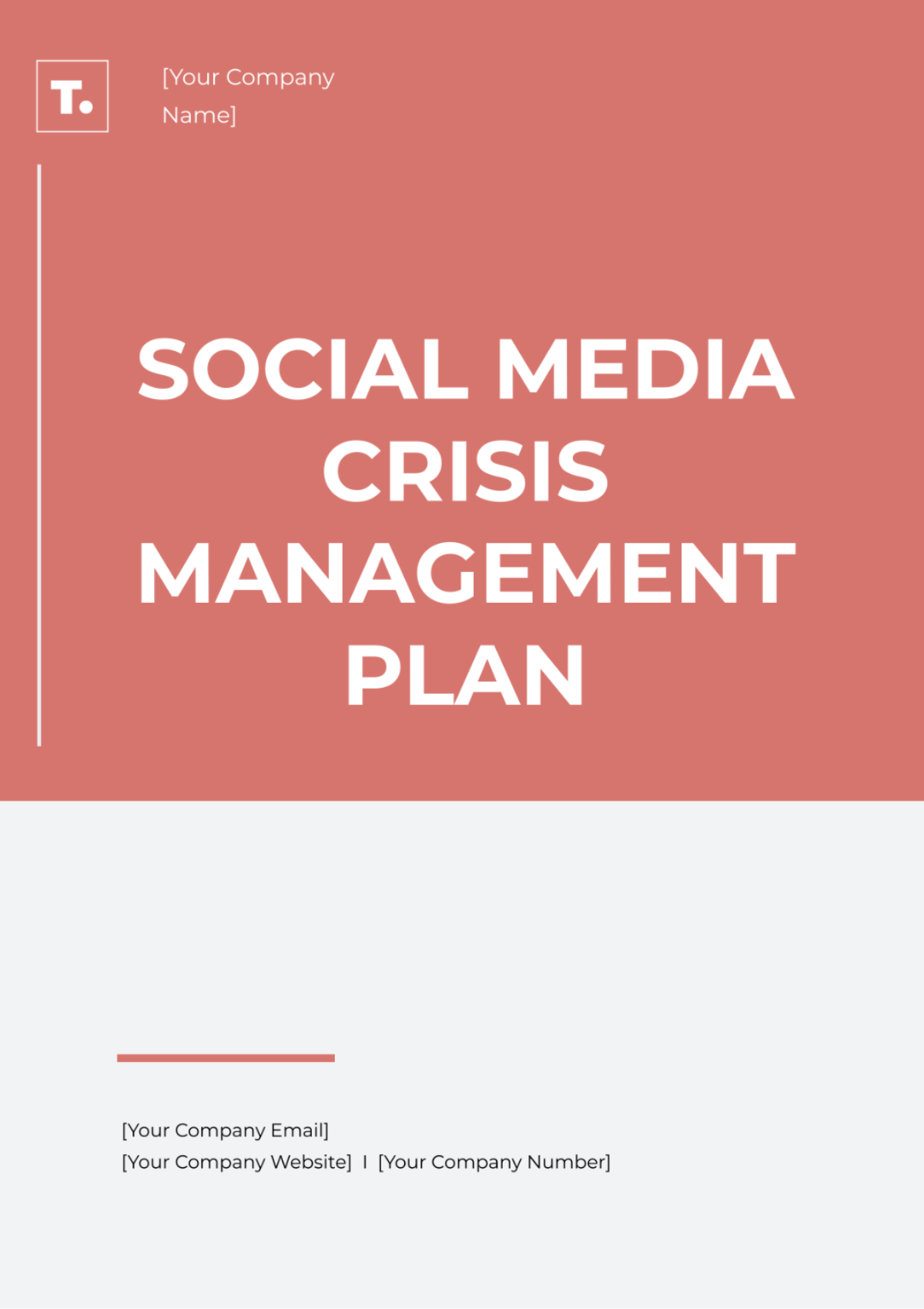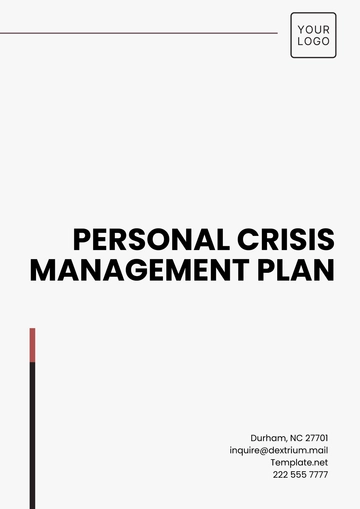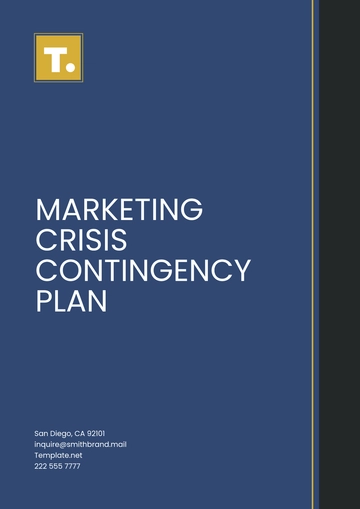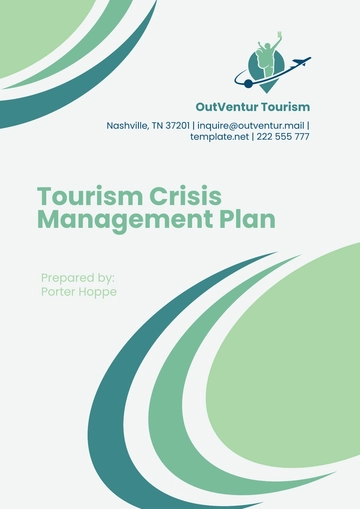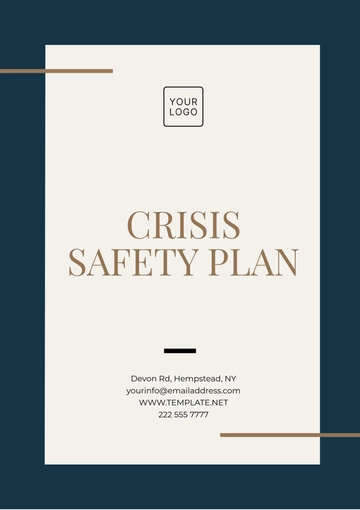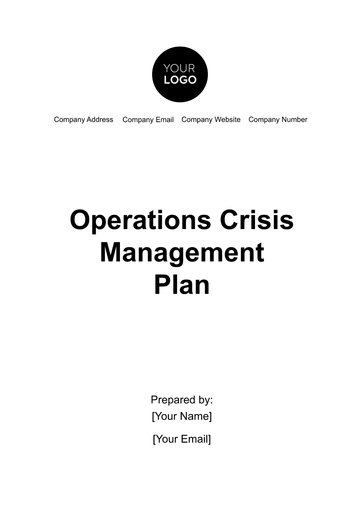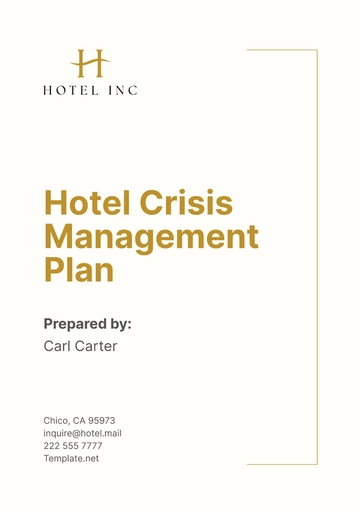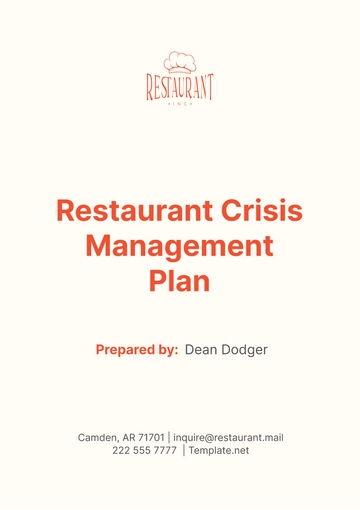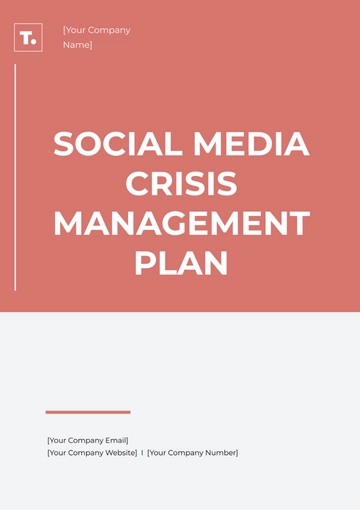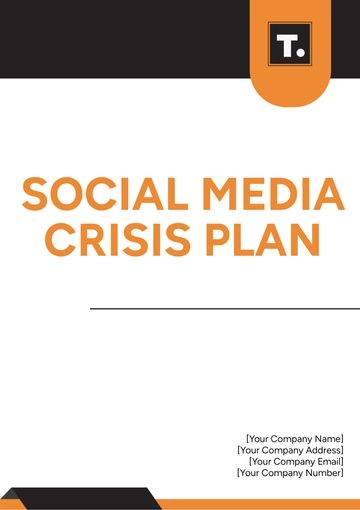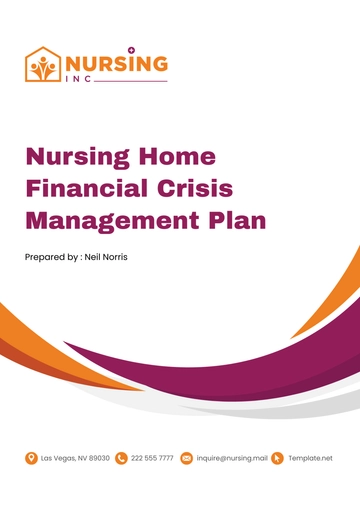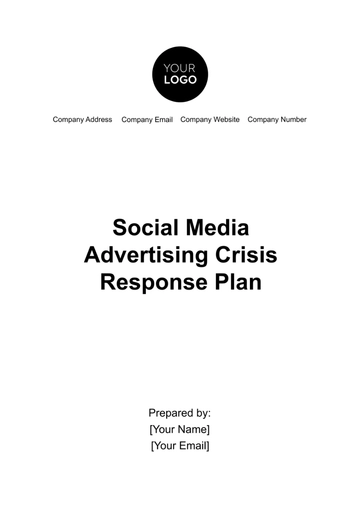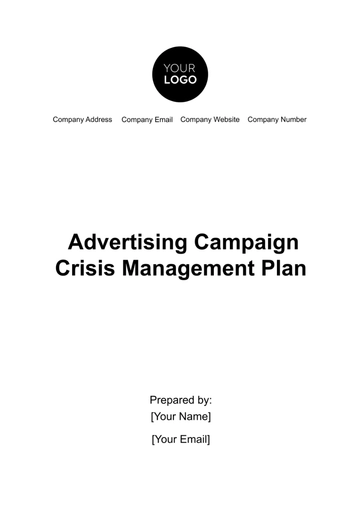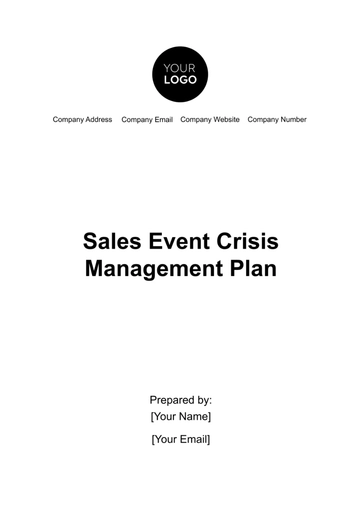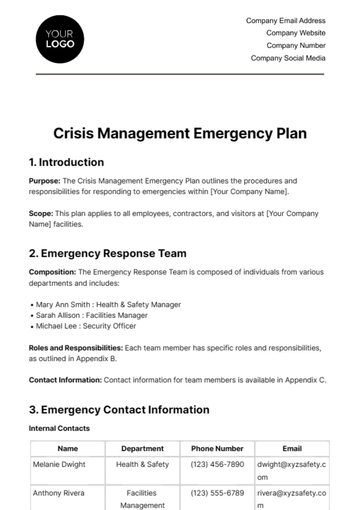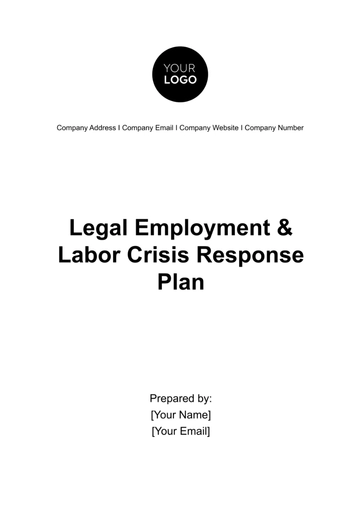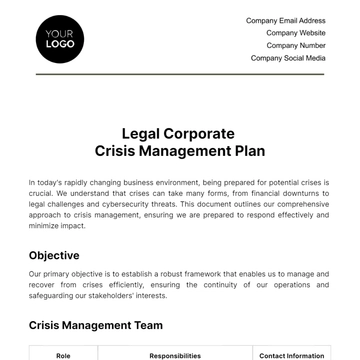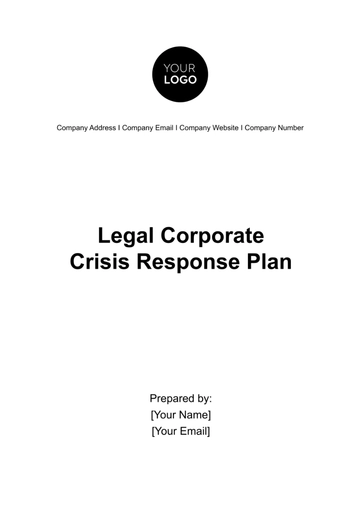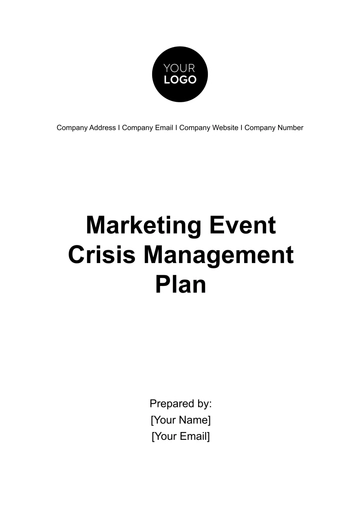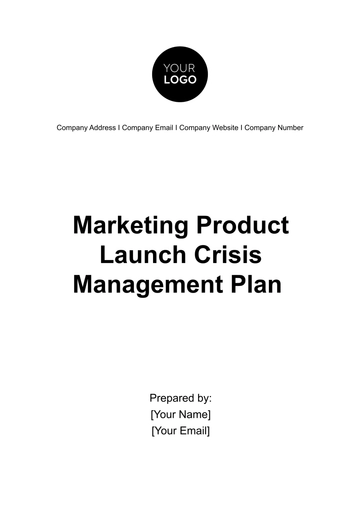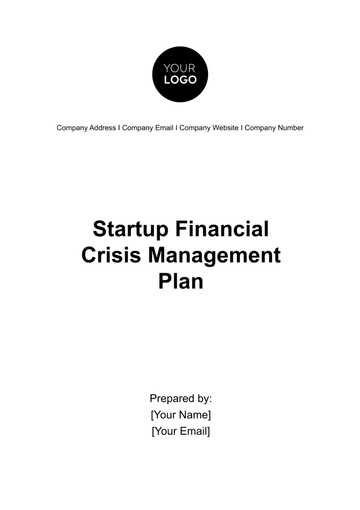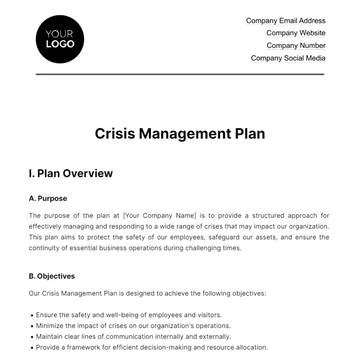Social Media Crisis Management Plan
I. Introduction
In today's digital age, social media plays a crucial role in shaping public perception of [BRAND/ORGANIZATION]. However, with the power of social media comes the potential for [NEGATIVE PUBLICITY/CRISIS] to arise swiftly and escalate rapidly. This Social Media Crisis Management Plan is designed to equip our team with strategies and procedures to effectively address and mitigate [NEGATIVE SENTIMENTS/CRISIS SITUATIONS] on social media platforms.
II. Identification and Monitoring
Establish a dedicated team responsible for monitoring [SOCIAL MEDIA CHANNELS/BRAND MENTIONS] round the clock.
Utilize social media listening tools to proactively identify [POTENTIAL CRISES/NEGATIVE SENTIMENTS] and trends.
Define key triggers and indicators that signal the onset of a social media [CRISIS/REPUTATIONAL THREAT].
III. Crisis Response Roles and Responsibilities
Role | Responsibilities |
|---|
Social Media Manager | Oversee crisis response strategy, coordinate with internal teams, approve messaging, monitor social channels |
Public Relations | Draft press releases, liaise with media outlets, manage external communications |
Legal Counsel | Provide guidance on legal implications, review messaging for compliance |
Customer Support | Respond to customer inquiries, provide support and assistance |
Executive Leadership | Provide strategic direction, authorize major decisions and actions during crisis |
IV. Escalation Protocol
Implement a clear escalation protocol outlining the chain of command and communication channels in the event of a social media [CRISIS/EMERGENCY].
Designate specific roles and responsibilities for team members during [CRISIS RESPONSE/SOCIAL MEDIA EMERGENCIES].
Ensure all team members are trained in [CRISIS MANAGEMENT PROTOCOLS/RESPONSE PROCEDURES].
V. Social Media Crisis Monitoring Matrix
Social Media Channel | Monitoring Frequency | Key Triggers/Indicators |
|---|
Twitter | Real-time | Sudden increase in negative mentions, trending hashtags related to crisis |
Facebook | Hourly | Spike in negative comments on posts, increase in messages to page inbox |
Instagram | Daily | Surge in negative comments on posts, decrease in engagement metrics |
LinkedIn | Weekly | Rise in negative articles or comments, significant drop in company page followers |
YouTube | Real-time | Surge in dislikes, increase in negative comments on videos |
VI. Assessment and Analysis
Conduct a swift and thorough assessment of the [SITUATION/CRISIS] to determine the scope and severity of the [ISSUE/THREAT].
Analyze the root causes and underlying [FACTORS/ISSUES] contributing to the [CRISIS/NEGATIVE SENTIMENTS].
Gather data and feedback from [SOCIAL MEDIA ANALYTICS/STAKEHOLDERS] to inform decision-making.
VII. Response Strategy
Develop pre-approved messaging templates for different types of [CRISES/NEGATIVE PUBLICITY], tailored to each social media platform.
Emphasize transparency, empathy, and accountability in all [COMMUNICATIONS/RESPONSES].
Monitor and respond to comments and inquiries in a timely manner, while adhering to [BRAND VOICE/TONE GUIDELINES].
VIII. Crisis Resolution
Implement strategic actions to address the [CRISIS/ISSUE] and mitigate its impact on the [BRAND REPUTATION/ORGANIZATION].
Collaborate with relevant internal stakeholders, such as [PR/LEGAL/CUSTOMER SUPPORT TEAMS], to coordinate response efforts.
Provide regular updates and progress reports to [STAKEHOLDERS/PUBLIC] as the [CRISIS/ISSUE] unfolds.
IX. Post-Crisis Evaluation
Conduct a thorough post-mortem analysis to evaluate the effectiveness of the [CRISIS MANAGEMENT RESPONSE/STRATEGIES].
Identify lessons learned and areas for improvement in the [CRISIS MANAGEMENT PROCESS/STRATEGIC RESPONSE].
Implement corrective actions and updates to the [CRISIS MANAGEMENT PLAN/STRATEGY] based on the findings of the evaluation.
X. Training and Preparedness
Provide ongoing training and development opportunities for team members to enhance their [CRISIS MANAGEMENT SKILLS/CAPABILITIES].
Conduct regular crisis simulation exercises to test the effectiveness of the [CRISIS MANAGEMENT PLAN/RESPONSE STRATEGIES] and ensure readiness for real-life scenarios.
Stay informed of emerging trends and developments in [SOCIAL MEDIA CRISIS MANAGEMENT/REPUTATION MANAGEMENT] to continuously refine and improve our approach.
XI. Conclusion
In conclusion, this Social Media Crisis Management Plan equips [ORGANIZATION/BRAND] with a robust framework for addressing and mitigating negative publicity on social media platforms. By implementing proactive strategies such as [IDENTIFICATION/MONITORING] and clear escalation protocols, we can effectively manage crises as they arise. Regular post-crisis evaluations and training ensure continuous improvement and readiness for future challenges. With this proactive and resilient approach, we safeguard the reputation and integrity of [ORGANIZATION/BRAND] in the digital landscape.
Plan Templates @ Template.net
